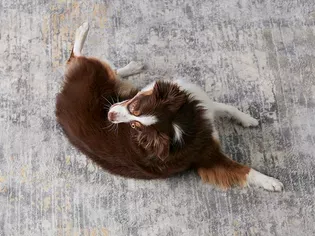Training a Dog to Roll Over
Updated on 04/26/24

Unveiling the Secrets: A Comprehensive Guide to Training Your Dog to Roll Over
Introduction
The captivating sight of a dog seamlessly rolling over at a mere verbal command exudes both charm and obedience. This seemingly complex behavior, often showcased in dog shows and obedience competitions, can be effortlessly taught to even the most novice canines. Embark on this detailed guide as we unravel the secrets of how to train your furry companion the art of rolling over.
Prerequisites: Laying the Foundation
Before delving into the specific steps, it's crucial to ensure your dog possesses a solid foundation in basic obedience commands such as "sit," "stay," and "down." These commands serve as building blocks, enabling your dog to comprehend and execute more advanced maneuvers like the rollover. Additionally, cultivate a positive and rewarding training environment where your dog feels comfortable and eager to learn.
Step-by-Step Training Guide
1. Luring with Treats
* Begin by holding a high-value treat near your dog's nose and gradually lower it towards the ground.
* As your dog follows the treat, gently guide its body into a rollover position.
* Reward your dog enthusiastically with the treat and plenty of verbal praise once it completes the rollover.
2. Combining Verbal Cue
* Once your dog consistently rolls over with the lure, introduce a verbal cue such as "roll over."
* Say the cue just before guiding your dog into the rollover position, repeatedly associating the command with the desired behavior.
3. Fading the Lure
* Gradually decrease the reliance on the treat lure by holding it farther away or concealing it in your hand.
* Continue using the verbal cue and reward your dog for rolling over even without the lure.
4. Proofing the Behavior
* To ensure your dog's understanding, practice rolling over in various locations and around distractions.
* Gradually increase the difficulty by adding distance or incorporating different surfaces.
Tips for Success
* Keep Training Sessions Short: Brevity is key. Short, frequent training sessions of 5-10 minutes maintain your dog's focus and prevent boredom.
* Stay Patient and Positive: Training a dog requires patience and positive reinforcement. Avoid scolding or punishing your dog, as this can hinder progress.
* Reward Consistently: Always reward your dog immediately after it performs the desired behavior. Consistency reinforces the connection between the action and the reward.
* Use High-Value Treats: Choose treats that your dog finds irresistible, as these will motivate them to learn faster.
Example Scenarios
Scenario 1:
* Behavior: Your dog rolls over without the lure.
* Response: Reward your dog with a treat and enthusiastic praise, saying "Good roll!"
Scenario 2:
* Behavior: Your dog starts to roll over but gets stuck halfway.
* Response: Gently assist your dog into the correct position and provide the treat reward. Avoid completing the rollover for them, as this undermines their learning.
Conclusion
Training a dog to roll over is an achievable goal with the right approach and consistent practice. By following the step-by-step guide outlined above and implementing the tips for success, you can empower your dog with this impressive and endearing skill. Remember to maintain patience, positivity, and a strong bond with your furry companion throughout the training journey.
Explore More Pets

Basic Training
Puppy and Baby Introductions

Working Dog Breeds
All About Search and Rescue Dogs

Dog Treatments
Puppy Vaginitis: Signs, Causes and Treatment

Dog Adoption
After More Than 1,200 Days in the Shelter, Coco Goes Home

Basic Training
How to Train Your Puppy to Go on Potty Pads

Hybrid Dog Breeds
The Difference Between a Mutt, Mixed Breed, or Designer Dog?

Dog Treatments
Nail Problems in Dogs

Puppies
7 Reasons Why Two Dogs Are Better Than One